Looking for a rewarding and scenic mountain biking route in the Cairngorms National Park? The Burma Road is a local classic—and for good reason. Combining wide Highland views, a challenging ascent, and flowing countryside tracks, this 26-mile loop is a must-ride for adventurous cyclists. It’s suitable for both mountain bikes and gravel bikes and can be tackled straight from the doorstep of Fraoch Lodge, your base in Boat of Garten.
The Burma Road route is a fantastic way to see spectacular views of the Cairngorms and the picturesque countryside of the National Park. Graded hard and requiring a high fitness level to complete, this 26-mile cycling route is achievable in four to five hours.
Trekking over a mixture of tarmac, dirt, grass and rocky tracks makes sections of the trail challenging. And with a three mile extremely steep climb the initial part of the route can come across as particularly challenging. But, overall it is worth the initial exertion.
Distance: 26 miles / 41 km
Ascent: 2123 ft / 647 m
Time: 4–5 hours cycling time
Grade: Hard (fitness and bike handling required)
Bike type: Gravel or mountain bike
Best ridden: Late spring to autumn, when trails are dry and views are clearest
Approx. calorie count: 1800 kcal
The adventure begins right outside Fraoch Lodge, with a pleasant 6-mile warm-up ride to Aviemore, winding through moorland and pine forest. From there, follow the main road through Aviemore and across the A9 to begin the official Burma Road loop.
We can help with maps, gear checks, and even bike hire or guiding if you’d prefer extra support.
Once reaching Aviemore it’s as simple as following the main road through town, crossing the A9 and following a single tarmac road to the Scripture Union Centre at Alltnacriche. Having followed the route through a forest gate this is where things begin to get difficult.
Brace yourself—the first real test is a 3-mile steep climb beginning near the Scripture Union Centre at Alltnacriche. Even seasoned riders often hop off and push sections of this brutal gradient. But perseverance pays off: the higher you climb, the broader the views stretch, with the Cairngorm mountains unfolding behind you.
Don’t forget to pause, catch your breath, and soak in the scenery.
After reaching the high point, you’ll descend a rough, loose track with gravel and erosion channels that demand focus and steady control. Once you reach the bridge at the base, the trail levels and transitions into a more leisurely spin through Highland farmland and riverside paths.
Expect some boggy patches, grassy tracks, and a few gates, but this section is pure joy—especially with the hard climb behind you.
Once back on tarmac en route to Carrbridge, a 1-mile detour to Sluggan Bridge offers the chance to see an 18th-century arched bridge in an atmospheric setting. A photo opportunity not to be missed!
In Carrbridge, reward yourself with a well-earned pint and a snap of the iconic packhorse bridge, before heading the final 5 miles back to Fraoch Lodge via the signed National Cycle Route 7.
Fitness required: High
Bike type: Mountain or gravel with good tyres and gears
Water & snacks: Bring your own; no services on route
Weather: Check the forecast—conditions can change quickly
Navigation: You can download the route on Komoot but we highly recommend carrying an OS paper map as a back up in case of any phone failures. Always best to download your map on your phone, especially in more remote areas with intermittent or non-existent phone signal.
Phone signal: Intermittent, especially on the high section
Bike facilities at Fraoch Lodge: Secure storage, repair tools, drying room, packed lunches, and a hearty dinner to come home to!
No need for a car—ride out straight from your accommodation
Stay in a cycling-friendly lodge with route support and local knowledge
Relax post-ride with home baking, hot showers, and mountain views
Extend your stay with more Cairngorm rides like Glenmore Forest, Ryvoan Pass, or Speyside Way
More pictures and description of the route from Dave Banks
The route reviewed in The Herald newspaper
Snow-holing in Scotland has a long established history in both our own winter mountains and further afield. Over the last 10 years, snow-holing has grabbed the attention of the media and the viewing public. This exposure has introduced and encouraged people happy enough to pay for the experience. Andy Bateman* of Scot Mountain Holidays asks, should we assume what works in other mountains will work well in our own?
Likely Ambient Temperature
With the seasonal minimum in some recent Scottish winters approaching -20oC and an official record of –27.3oC, you would be forgiven for assuming you’d might be sleeping in temperatures approaching those of Arctic Norway.
Yet Cairngorm (1245m) has only ever recorded around half of this at –16.5oC (12th Jan 1987). Supporting this, Coire Cais Ski Base Station (630m) has a low of -9.2oC. The residents of nearby Nethybridge (210m) though, claimed the mercury dropped to -31.3oC on 10th January 1982. Satellite evidence suggests they were right!
The vital bit of information on these -30-ish lows are that they were all recorded during temperature inversions. The cold air flowed off the mountains and pooled in the valley bottoms where it cooled further whilst the mountain summits remained appreciably warmer. These record minima are in no way a reflection of the likely temperature you would find on our mountains. It’s not surprising when we’re never that far from a relatively warm sea in the UK!
So what temperature is likely when snow-holing in Scotland, let’s say, in the Cairngorms at around 1100m? The seasonal minimum for 900 m is usually around -8oC. At 1100 m this could translate to -10oC. Far more frequently winter temperatures at this height are around -5 and above. Our mountains simply don’t experience anything like the temperatures you might get in e.g. Arctic Norway.
Considering the warmer temperatures when snow-holing in Scotland, do we really need snow-hole features designed to capture warm air? Are sleeping platforms and cold air drains really necessary or should our aim be to lose the warm air?
Snow is a great insulator. A meter thickness in your roof and front wall is of vital importance in this regard. That is 20 cm of insulating snow both on the exterior and interior surfaces with 60 cm of well insulated structurally sound snow. Light penetrates to a depth of around 75 cm so if you see daylight, they’re getting too thin. It should also be borne in mind that a 1 m thick roof represents a considerable weight. It’s vital the front wall is adequately thick and strong enough to support the roof.
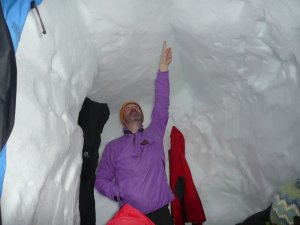
How high is that roof? Look at the apex centre.
Snow-hole sites by virtue of their high snow accumulation and steep slopes can be prone to avalanches. To be safe, you may need to pick a slope with a more gentle gradient and spend more time digging out the entrance. The majority of avalanches occur on slopes at or above 30 degrees. To maintain a 1 m thick roof, on a slope less than this, you’ll have to dig in a minimum 2+ horizontal meters from the top of the doorway before you start widening out the living area.
Avoid large areas of unsupported roof by keeping your snow-hole narrow. Aim for a depth of 2 body widths between the internal surfaces of the front and back walls.
This means you can create a relatively steep-angled apex ceiling which helps to avoid any drip points. Warm air can then be channelled towards the ventilation holes at the apex high points. In addition with it running the length of the snow-hole it increases the height with minimal snow removal giving everyone the opportunity to straighten their weary backs!
Importantly it also removes the unsupported dead weight from the ceiling. This is one of the most important aspects of snow-holing in Scotland. Although not mutually exclusive, removing the ceiling dead weight is of more importance to ceiling stability than temperature! Very few, experienced and inexperience alike, pay attention to removing the dead weight. I’ve managed to snow-hole once at +5 Deg C without any roof deformation! The roof of a snow-hole I constructed for the BBC Travel Show lasted through until around the 25th June!! The ceiling at that point was only a foot off the floor, but it hadn’t collapsed!! Every other snow-hole at that point was merely a hollow in the snow. As you create the apex be careful not to make the roof too thin. The strength of the roof is in it’s thickness.
Make sure there is good ventilation. My test is to regularly watch my breath. If it drifts off to one side it’s a good indication that ventilation is adequate. Cooking with pressure stoves in a poorly ventilated snow-hole is extremely dangerous due to the formation of toxic Carbon Monoxide. All pressure stoves work by first oxidising the fuel to Carbon Monoxide (CO) and then to Carbon Dioxide (CO2). The different colours in the flame indicate this. Irrespective of good ventilation a pan of icy water can have a severe quenching effect on the flame preventing combustion of the CO. Research for the British Antarctic Survey (BAS)** showed in heating a pan of icy water CO production could be significantly reduced by raising the pan supports higher above the flame. Snow-holers should acquaint themselves with the symptoms of CO poisoning.
To put this into perspective, I’m unaware of anyone in the last 25 years dying from CO poisoning whilst snow-holing in Scotland. I do know though, instructors who’ve attributed head aches to possible CO poisoning. It’s worth considering taking a small portable CO detector with you. In a snow-hole with a single entrance and no through air movement, ventilation may well be inadequate. Extinguish candles before you go to sleep as they also produce small amounts of CO.
Although the temperature may remain around 0oC you may well still be “injecting” appreciable heat energy into the snow pack. It takes considerable heat energy to turn snow at 0oC into water at 0oC so it will not be reflected in a temperature rise. It’s far more desirable that this heat energy drifts out of the doorways than being absorbed by the snow pack.
Make it large enough to stand up in. Large communal snow-holes are less prone to an abrupt temperature rise as they have better ventilation characteristics by virtue of having several entrances, etc. An entrance walled up with blocks in combination with an open doorway will often still allow plenty of ventilation.
Putting aside the dangerous scenario of cooking in a poorly ventilated snow-hole, I’ve never got up in the middle of the night to purely unblock a doorway for ventilation reasons. All the medical research I have seen (references below) doesn’t suggest there is any potential of becoming severely hypoxic in your sleep. Studies suggest sleep will become agitated, you will awake and in doing so get up and ventilate a stuffy snow-hole.
One potential hazard of digging a small snow-hole is you don’t have enough space to put the snow as you attempt to extricate yourself after a night of severe drifting. On one occasion I did have to tunnel out 1 ½ m before I hit the surface!
When it comes Scottish snow conditions, don’t underestimate how hard the snow can get. You will need a snow shovel with a metal scoop and a good snow saw. The sintering effects of strong sunlight and hard frosts of high pressure can make wind-slab snow astonishingly hard to dig. A good snow saw is often the only effective way to deal with this type of snow.
Many of the snow-hole sites are immediately adjacent to water courses. In addition, the snow pack often lasts well into the summer meaning there’s little opportunity for biological breakdown of human waste. If you do have to go you should do your business well away from the snow-hole site and far more preferably have some system to carry it out. Cairngorm Mountain’s Snow White Project has greatly improved the situation at the Cairngorm sites. All snow-holers coming to the Cairngorms are encouraged to use it.
The safety of a snow-holing in Scotland is often a reflected by the time it has taken to dig. I’m cautious about suggesting how long digging should take as it depends on a number of factors, not least the condition of the snow. From a “duty of care” perspective I feel a large communal snow-hole is much better than several separate small ones. I normally anticipate spending 4 to 5 hrs digging a 4 plus person snow-hole. I accept in soft snow conditions that this can possibly be shorter for a fit party of 2 each digging their own entrance.
With the vagaries of the winter weather, if done correctly Snow-holing is often the far safer option compared to a tented high camp in Scotland’s Winter Mountains.

* Andy holds the WML and IML awards and has over 20 years Mountain Leading experience. He has guided well over 30 commercial snow-holing trips in this time and although none of the mountaineering qualifications have a remit that covers snow-holing, he is one of the few guides deemed competent by HSE criteria of “relevant experience” to run snow-holing trips.
** British Antartic Survey helped in a BSc thesis. Available on request from andrew@scotmountainholidays.com
Medical references:
www.ncbi.nim.ni.gov/pubmed/18665947
www.ncbi.nim.ni.gov/pubmed/9340627
www.ncbi.nim.ni.gov/pubmed/8355417
www.ncbi.nim.ni.gov/pubmed/15265339
One of the most frequently asked questions from those joining our winter courses is: What if there is no snow? Although we can’t control the weather, we can almost guarantee there will be snow—especially on the high peaks during winter and early spring. However, for those still concerned, let us put your worries to rest.
The Cairngorms are home to Britain’s most permanent snow beds, some of which persist well into July or even early August. The high altitude and vast plateau of the Cairngorms make them a natural snow trap. Even in milder winters, the unique topography and wind patterns often ensure that snow is captured and retained in key areas. According to a study by the Royal Meteorological Society, the Cairngorm plateau experiences snow coverage for an average of 76 days per year, making it one of the most reliable locations for snow in the UK.
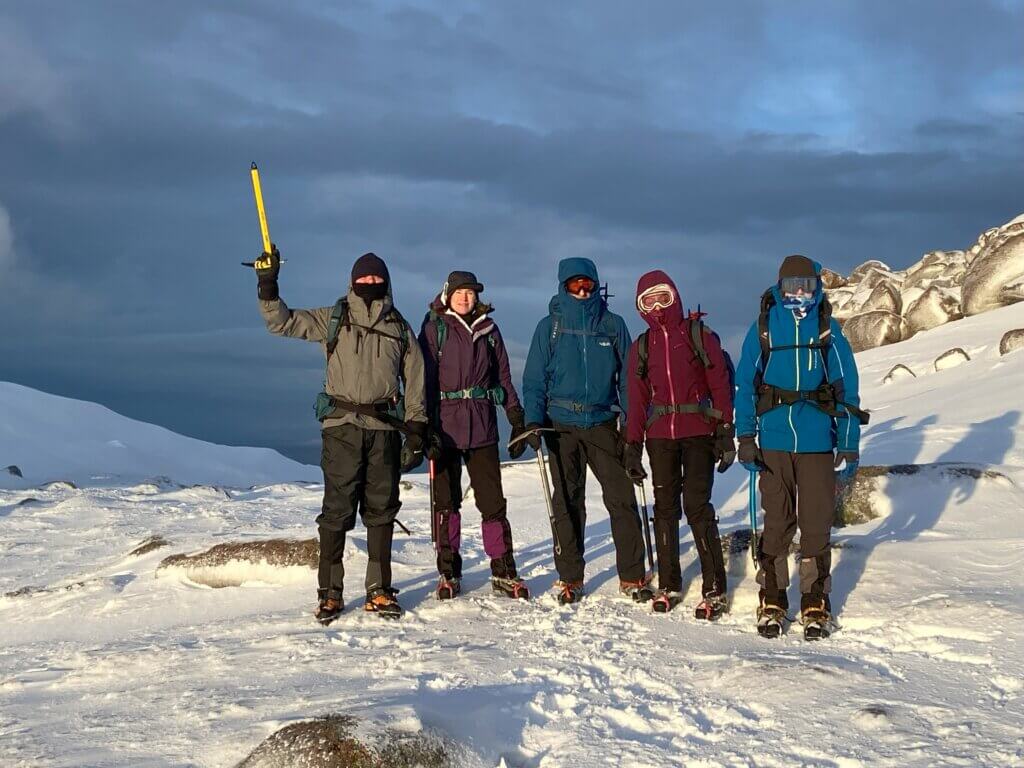
If, for some reason, the winter is unusually mild and snowfall is limited, it’s not the end of the world. Winter Skill courses with Scot Mountain Holidays are designed with flexibility in mind. Snow is just one of three critical factors that influence the course—the other two being wind (which facilitates snow drifting) and the expansive Cairngorm plateau (which helps to capture and hold snow).
Even if snow levels are lower, the skills taught during our courses remain relevant. In fact, hard, icy snow that forms after a thaw and subsequent freeze is often ideal for teaching crampon techniques. Fresh snow, while beautiful, doesn’t always add additional value to winter skills training.
In the 25 winter seasons that Scot Mountain Holidays has been running Winter Skills courses and hiking holidays, no course has ever been cancelled due to a lack of snow. This incredible track record highlights the reliability of the Cairngorms as a winter training destination.
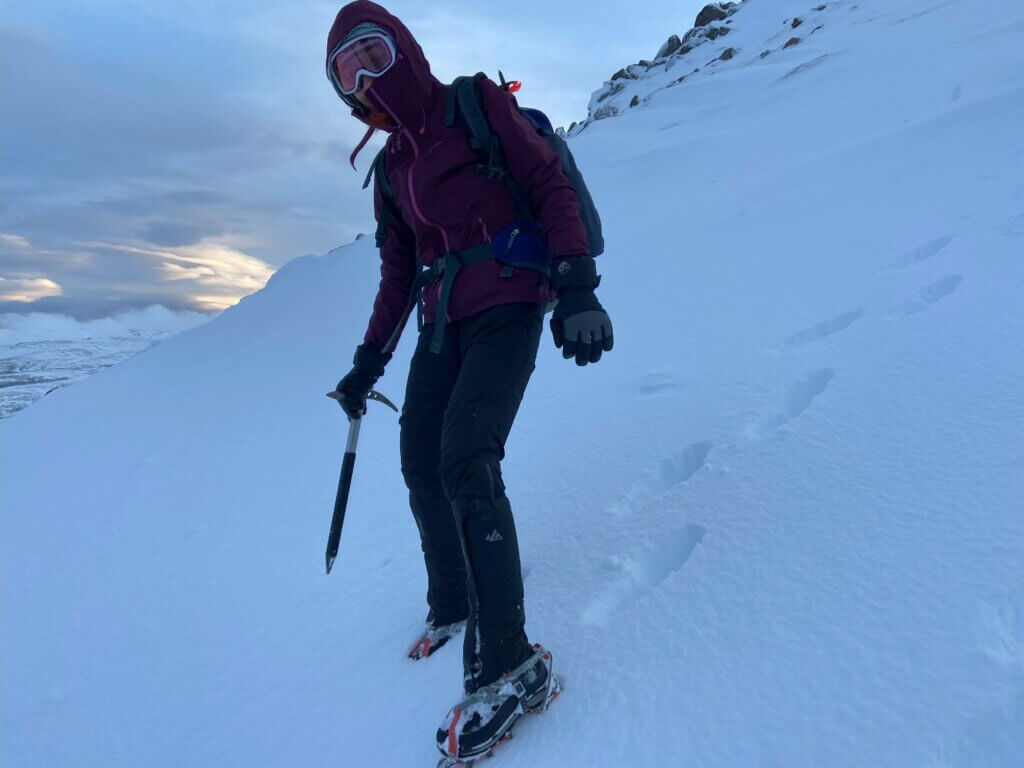
While snow is a strong likelihood on the peaks where our courses take place, there are many other elements that make your experience memorable. Thick, deep snow can sometimes make routes more strenuous. On the other hand, mixed conditions offer a chance to practice a wide variety of essential skills, including:
These skills are just as important, if not more so, than simply walking on deep snow.
Remember, winter skills are about preparing you for all types of conditions you might encounter in the mountains. Snow is a bonus, but not a requirement. The camaraderie, expert instruction, and opportunity to immerse yourself in Scotland’s stunning winter landscape are what truly make Scot Mountain Holidays’ courses unforgettable.
So, whether the snow is thick, patchy, or concentrated in specific areas, rest assured that your Winter Skills course will still be an incredible and valuable experience. The Cairngorms’ rugged beauty, combined with expert guidance, ensures your time with us is both safe and rewarding. As one participant noted, “The course was transformational—I learned so much, regardless of snow levels.”
Join us this winter to develop your confidence and skills in one of the UK’s most dramatic settings. With Scot Mountain Holidays, you’re in expert hands, and no matter the snow conditions, we’ll make sure your time in the Cairngorms is unforgettable.
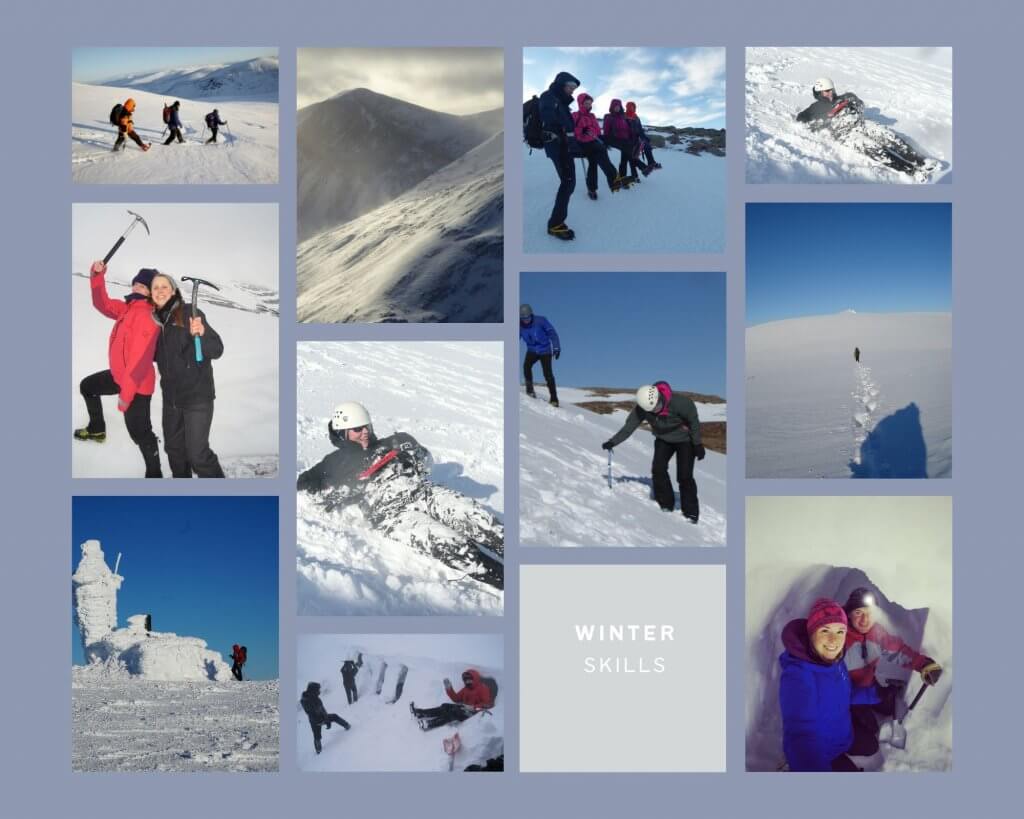
Scotland is a land of breathtaking beauty, with unique charms that shift with the seasons. While summer often steals the spotlight for visitors, winter remains a hidden gem offering raw beauty, crisp days, and unparalleled hiking experiences. If you’ve been hesitant to venture out during the colder months, let us convince you with five compelling reasons to go hiking in winter and join Scot Mountain Holidays for a trip you’ll never forget.
The peaks of Scotland are awe-inspiring at any time of year, but winter elevates their majesty to a whole new level. Snow-dusted summits, frost-kissed landscapes, and the clarity of winter skies combine to create an otherworldly spectacle. On clear days, the views are nothing short of magical, with the crisp air enhancing visibility and making every vista unforgettable. Scotland’s Cairngorms, for instance, often boast snow-covered peaks that rival the beauty of alpine ranges. Layer up, embrace the brisk wind, and let the beauty of hiking in winter reward your efforts.
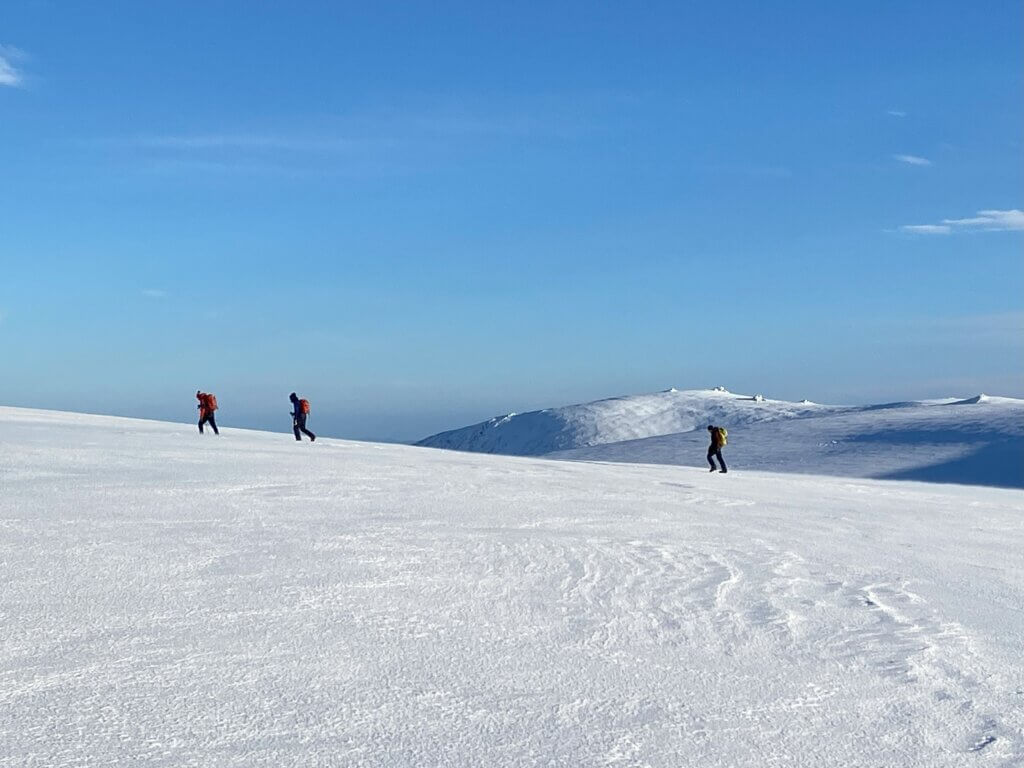
What a view! – New Year Winter Walking 2022 – 2023
The cold temperatures of winter naturally deter many would-be hikers, leaving the trails quieter and more serene. This means fewer crowds and more opportunities to immerse yourself in the solitude of Scotland’s wild spaces. With fewer distractions, you can fully connect with nature, reflect, and appreciate the tranquility of your surroundings. Imagine having iconic trails, like those in the Cairngorms or around Ben Nevis, almost entirely to yourself. It’s an unparalleled chance to experience Scotland’s rugged beauty in its purest form while hiking in winter.
Winter unveils a strikingly different perspective of Scotland’s landscapes. The absence of lush greenery exposes the raw, rugged beauty of the mountains—from dramatic rock formations to stark, snow-covered terrain. If you’re lucky enough to encounter fresh snowfall, the transformation is magical. The pristine white blanket enhances the contours and textures of the land, offering photographers and nature enthusiasts endless inspiration during their winter hikes. Plus, winter often brings incredible sunrises and sunsets that bathe the snow-dusted peaks in hues of gold and pink, perfect for unforgettable photos.
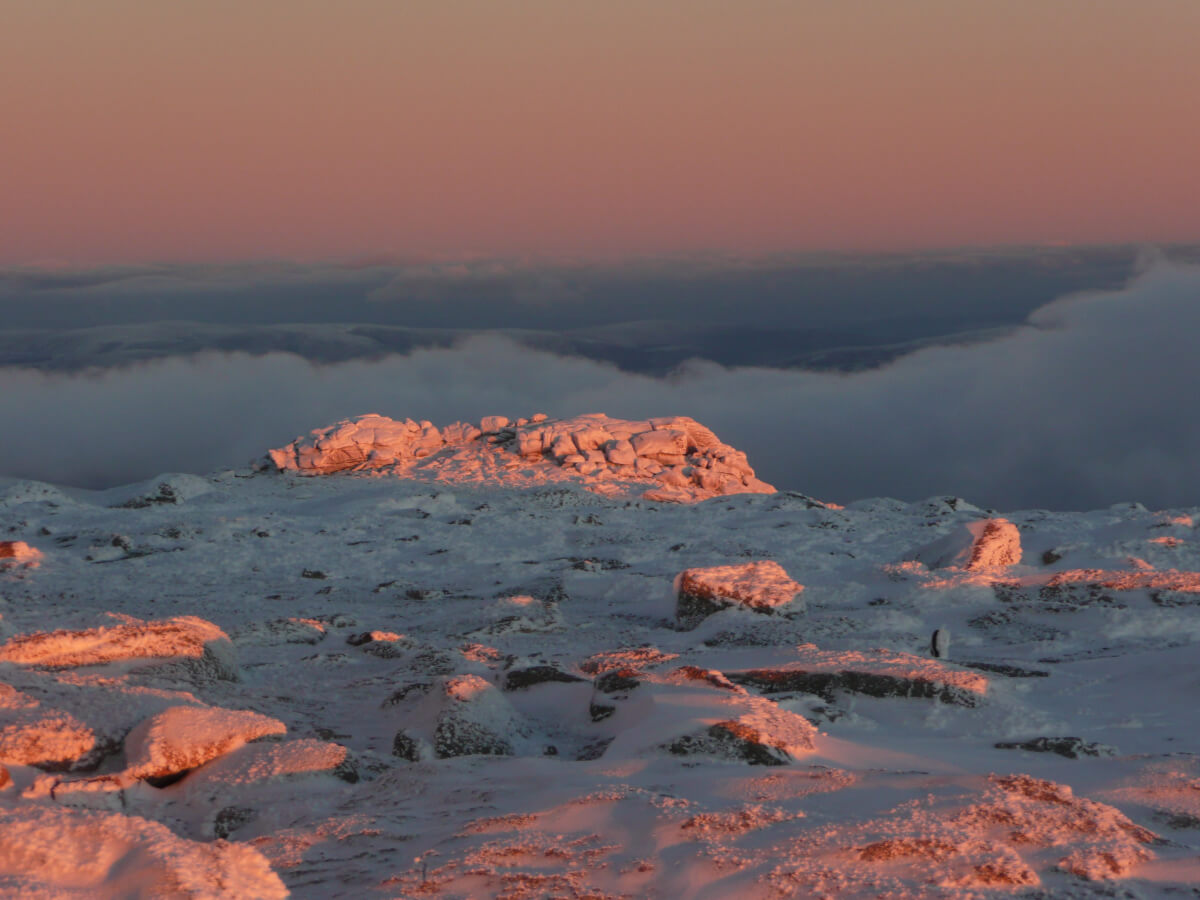
Winter sunset colours glowing on the snow covered Cairngorms
For the fitness-minded adventurer, hiking in winter provides an added bonus: increased calorie burn. The colder temperatures force your body to work harder to stay warm, meaning you’ll burn more calories compared to hiking in warmer weather. Add in the effort of navigating snow-covered paths, and your winter hike becomes an even more rewarding workout. Studies suggest that cold-weather exercise can burn up to 30% more calories, making winter hikes both invigorating and beneficial for your health.
Hiking in winter introduces unique challenges, from navigating icy trails to managing colder temperatures. These added elements demand a different level of preparation and skill, but they also offer an unparalleled sense of achievement. Conquering a winter hike builds confidence and leaves you with stories to share for years to come. Proper preparation—like wearing crampons and layering effectively—can transform these challenges into exciting opportunities to learn new skills. Plus, the sense of adventure and novelty makes every step more exciting.
If you’re ready to challenge yourself, embrace the season, and experience some of the most stunning terrain and views imaginable, hiking in winter in Scotland awaits. With the Cairngorms averaging over 100 days of snow cover per year, it’s one of the best places in the UK to experience a true winter wonderland. Join Scot Mountain Holidays for a guided adventure that will leave you with lasting memories and a newfound appreciation for this extraordinary season.
Setting off on expedition across the snowy Cairngorm plateau
When you think of snow, it’s easy to picture adrenaline-filled days of skiing or snowboarding. But what if you’re not a fan of the slopes or simply want to try something different? Scotland offers a winter wonderland full of thrilling alternatives that let you embrace the snow in unique ways.
Here are Scot Mountain Holidays’ top four snowy adventures for non-skiers, perfect for creating magical winter memories.
Hiking isn’t just a summer activity—winter hiking offers a whole new level of magic. With snow-dusted trails and tranquil, crowd-free paths, it’s the perfect way to experience Scotland’s rugged beauty in its most serene form.
Yes, winter hiking comes with challenges, but the rewards are extraordinary. Picture yourself surrounded by glistening peaks, breathing in crisp mountain air, and savoring the quiet that only snow can bring. Just be sure to bundle up and prepare for the elements!
For those craving adventure with a side of learning, Scot Mountain Holidays offers snow skills courses that are as practical as they are exhilarating.
From mastering ice axes to building emergency snow shelters or navigating icy terrain, these courses give you hands-on experience that’s both empowering and fun. Not only will you leave with stories to tell, but you’ll also pick up life-saving skills that every winter enthusiast should have.
Not every snowy adventure needs to be a grand expedition! Sometimes, the best memories come from simple, joyful moments.
Spend an afternoon building a snowman, crafting the perfect snow angel, or engaging in a good old-fashioned snowball fight. If you’re traveling with kids (or just feeling like one yourself), grab a sled and race down a snowy hill.
End your day by cozying up by a roaring fire with a hot drink and a good book. After all, there’s nothing like the warmth of home after a day of snowy fun.
If you’ve never tried snowshoeing, you’re in for a treat! Imagine strapping on tennis racket-like footwear and gliding effortlessly across snowy trails and frozen terrain. Snowshoeing is easy to learn, beginner-friendly, and a fantastic way to immerse yourself in Scotland’s breathtaking winter scenery. However, the snow conditions on the Scottish hills are not always suitable for snowshoeing which lends itself more to the soft powder snow you find in the Rockies or the Alps. It’s far more common to see winter hikers in Scotland out with crampons and an ice axe, than it is to see a group of snowshoers.
From snow-covered peaks to quiet, magical trails, Scotland is the ultimate destination for winter lovers. With Scot Mountain Holidays, you can enjoy a range of activities designed for adventurers who want to experience the snow without strapping on skis or a snowboard.
So, whether you’re trekking through glistening forests, learning new skills, or simply playing in the snow, Scotland promises a winter escape like no other.
Ready to trade the slopes for something different? Let Scot Mountain Holidays help you craft your perfect snow-filled adventure!
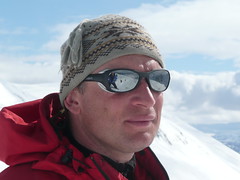
Andy Bateman has instructed and guided for over 25 winter seasons across Scotland. At times its blue skies and a winter wonderland but being based in the Cairngorms he is no stranger to the sometimes uncompromising conditions that can be encountered on Scotland’s high mountains during the winter months.
Putting aside the obvious need to dress properly for the conditions, here are a few of his expert winter skills tips:
Unless your rucksack has a facility specifically for carrying crampons safely on the outside, they should be in a crampon bag inside your rucksack when not on your boots. They are heavy items of kit and can easily work loose when attached with exterior straps or bungee. Crampons carried on the outside can also be a source of injury for other members of the party e.g. in high winds.
The snow and ice conditions can be as varied as the weather that creates them. Don’t limit the techniques at your disposal before you’ve even set foot on the mountain by wearing bendy boots. A key and often overlooked feature of a stiff boot is that it allows you to concentrate your weight on the edges of the sole so you’re able to use them to cut into the snow surface. Your boot is as much a tool as your ice-axe or crampons. B1 “winter” boots are often too flexible to effectively kick steps in hard snow; if you try to front point, the toes tend to bend up and the heel drops causing the wearer to feel unstable. Fully rigid B3 mountaineering boots don’t feel overkill for a winter mountain walk.

Crampons at work
There are a few situations where a long shaft is an advantage but they are outweighed by the number of situations where a short shafted axe is your best bet. Go for an axe with a relatively straight shaft and no longer than 55cm irrespective of your height.
Remember in winter trekking your rucksack will be heavier, plus the extra weight of winter boots and crampons on your feet, the underfoot conditions and having to check the map more frequently all conspire to slow your pace. On top of this there are fewer daylight hours. It’s important that you’re not over ambitious with your route plan to prevent being caught out. Always make sure you have a decent headtorch.
Your rucksack is already heavier with all the necessary gear required by winter. Heavy boots, crampons and underfoot conditions will sap energy and slow you down. Don’t burden yourself further with superfluous kit by considering whether an item is really necessary for the day. At the same time, be sure you have everything you need.
 Full moon Snow-hole Expedition winter gear
Full moon Snow-hole Expedition winter gearEven with an insulated jacket around the tube, once the temperature drops below -3 deg C hydration bladders tend to easily freeze. You are better off with a water bottle in your sack as close to your back as possible to receive a little body heat. Better still take a thermos flask.
There are situations where an ice axe leash is an advantage but there are also a good number of situations where they can be a hazard. Have an arrangement where the leash can be easily added or removed from the head of the axe, i.e. tie a loop in the end of the leash and larks-foot it through the head of the axe. When you aren’t cutting steps or climbing the leash is probably best kept in your rucksack.
Remember, as your core temperature cools your body reduces its circulation to your extremities, like your hands. If you have cold hands, it may well be worth considering putting an extra layer on, as well as warmer gloves. If the body is compensating for a cooling core, to a certain extent, it doesn’t matter how well insulated your hands are, it’s not going to send anymore warm blood to the extremities.
Your body can burn up 40% more calories just by keeping itself warm. Underfoot conditions and heavy gear add to your body’s energy demands. Standing around for more than 10 minutes can mean folks start to get chilled. Schedule-in regular breaks where possible. I find a 10 min break after approximately every 80 min of walking is optimal. You need good judgement and one of the most sensitive organs in your body to a drop in temperature or a lack of energy is your brain. It needs to be well nourished by both.

Striding out to conquer the winter Cairngorms
Why do it? Because this is why it’s worth it.
What does ‘off the beaten track mean to you’? Depending on how adventurous you are, the phrase can mean different things to different people. It can be scary to choose the path less travelled by, but the benefits from getting off the beaten track in Scotland are exhilarating.
But, this certainly doesn’t mean you need to skip all the top sites like Loch Ness. For some, getting out of cities is rural enough and therefore Loch Ness is a great choice. But for those feeling adventurous and wanting to get a little more remote, we can help you there.
Wanting to find a little peace and quiet is the most natural thing in the world whether you’re most at home surrounded by nature, a city dweller or somewhere in between. And arguably, there is no better place than the Highlands of Scotland. Known for its epic beauty, contrasting scenery and out of this world views, you’ll soon find yourself where the air and water are fresher and the most prominent noises keeping you company is nature at its finest.
The Cairngorm National Park is the ideal base for you to experience and explore the remoteness the Highlands can offer. Depending how far off the beaten track you want to get you’ll find an array of options suited for all fitness levels and ages. Offering options to be guided, or self exploration if you prefer, Scot Mountain Holidays has it all.
We understand that only you know what getting off the beaten track means. But, Scot Mountain Holiday trips, by definition are all off the beaten track. It’s unlikely you’ll see crowds of people during any typical day with us. Choosing one of our trips is a great way to decide if the more unusual spots and a more active vacation is the way forward for you.
Whether you’re after hiking, mountain biking, walking or countryside relaxation, you’ll find it here. We can help organise a tailor-made trip for you, friends and family. Or, you can join one of our scheduled trips where you’ll meet like-minded people and gain friends for life. The choice is yours.
We’ve scheduled a new trip for winter 2024. We’re going to be based in Glencoe for a week in March bagging some tasty Munros. It’s a new venture for us so we’ve looked for some spectacular images to illustrate the trip. On a search of Flickr, we found John McSporran. John has kindly agreed not only to lend us some of his spectacular Glencoe images, but he’s also written a brief summary of why he personally finds Glencoe such a fascinating area to explore.
I first began photographing Glencoe about 20 years ago. It is one of those places where the weather is always changing, the light can be fantastic one minute and terrible the next. It can be mean and moody, mystical and magical, but always interesting and frequently awe inspiring. Even on horrible days, that fleeting moment when a beam of light strikes the mountains makes it all worth while.
About 10 years ago I realized that if I wanted the best photos of Glencoe I needed to get high. That’s when I began climbing its mountains. Then I realized that I needed to be ‘up top’ for sunrise and sunset (the golden hours). That’s when I climbed in the dark using a head torch. Then I began to camp out up top. Then I went ‘full on’ and climbed in the dark in mid winter using an ice axe and crampons – just for that one great photograph. Carrying 25 kilos / 55 lbs of camping and photography gear to the top of a mountain can be hard (particularly when in your late 50’s), but the experience of stunning sunrises and sunsets in Glencoe makes it all worth while.
I have met hundreds of people on the Scottish mountains, some I meet many times, some only once, but there is a community spirit amongst those who climb mountains, especially photographers – solitary committed people whose hard shell cracks as soon as we begin to swap stories.
My favourite Glencoe mountains are Beinn a’Chrulaiste and Buachaille Etive Beag. They are not the hardest or the tallest, but they provide the best viewpoints and give sweeping panoramas of the others.
Other favourite locations are:
There are so many great locations, you are spoiled for choice.
We have a saying in Scotland – if you don’t like the weather, wait 15 minutes, it will change. I hope you enjoy your visit to Glencoe.
For more choices of walking holidays in Scotland, head over to our main holiday page
For more information on walking in the Highlands
there are trails all round the area plus several centres with purpose-built tracks like Laggan Wolftrax and Glenlivet Bike Trails. Bikes can be hired from Mikes Bikes or Bothy Bikes in Aviemore.
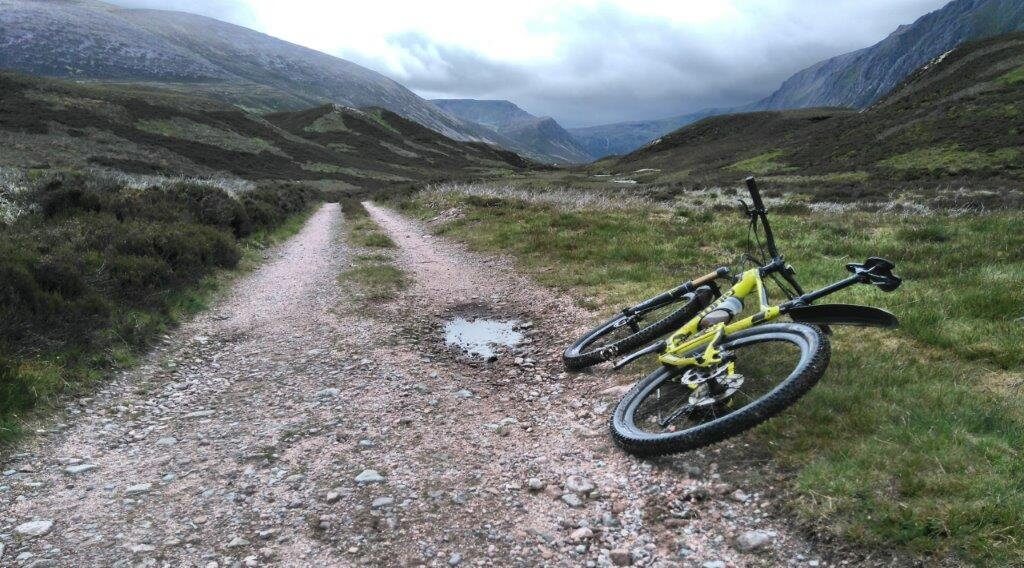
Enjoy the wild parts of the UK out on your bike
with G2 on the Alvie Estate.
Aviemore has a community ice skating rink again and you can also use the all weather rink at Loch Insh
you could take the public bus to Boat of Garten (5 miles) or Nethybridge (8 miles) and walk back to Aviemore stopping in the Old Bridge Inn for a pint on your return.
and paddle the Spey;
canoe with the Moray Firth dolphins or kayak/canoe on Loch Ness.
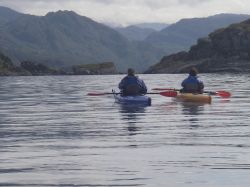
Water based options might not be as appealing as you think, but water is surprisingly warm in the winter.
a tour to Loch Ness is a popular option for our guests at Fraoch Lodge
and check out the Findhorn Foundation or visit the Kimberley Inn for lunch and walk along the white sands of the beach.
and try out ice skating.
unfortunately the Aviemore pool at the Macdonald’s resort is not currently available to the public for swimming.
and tour a distillery plus visit the Cooperage
Always a wet or cold day option – a distillery visit or whisky tasting.
or Johnston’s wool mill in Elgin if Knockando is closed. Tours are every hour until 3 or 4pm and are free of charge.
where you can experience the whole wool story from shorn fleece to completed material.
Get crafty if you’d like some time and space to knit, ask Rebecca for recommendations
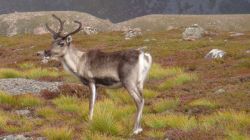
If you like to see reindeer, you should come to Aviemore, particularly in the winter which is their natural habitat.
and/or the Highland Folk Museum
Traditional village which is part of the Newtonmore Highland Folk Museum
New website for the Cairngorms National park highlighting selected experiences within the park – cairngormsnationalpark.co.uk
Walking holiday options on the west coast of Scotland are almost endless. Knoydart or Skye – where to go? One of the most popular and endlessly filmed locations is the Isle of Skye. The dramatic jagged images of the Skye hills have formed the backdrop for many a dramatic movie. However, there are places which are just as satisfying to walk all up and down the west coat where the views are as magnificent or even more stunning. We’re heading over to Skye and to Knoydart in May this year. See our assessment here of the advantages and disadvantages of each to help you make a decision.
Skye has a huge reputation as a destination in Scotland based on the dramatic nature of its scenery and its romantic attachment to the Stuart/Jacobite legend. The attraction of Skye for hillwalkers and Munro baggers comes from the nature of its terrain. There is nothing to match the jagged peaks of Skye in the UK. The closest comparable peaks are in the Alps, when you may also have to contend the the altitude and the additional possible complication of altitude sickness.
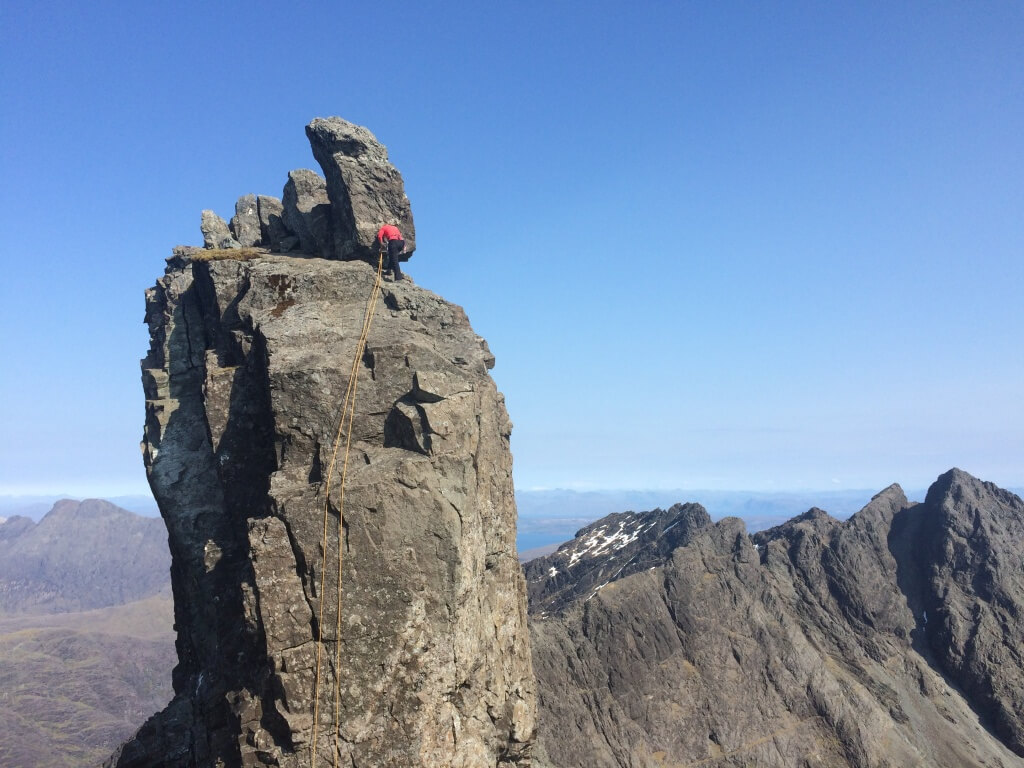
Topping out on the Innaccessable Pinnacle in glorious sunshine weather, Skye May 2016
Skye is more accessible. The bridge over to Skye has made it much more accessible to everyone, especially now there is no toll. However, it has also taken away a small part of the mystique which comes from taking a ferry to get somewhere; it makes you feel more like you’re going somewhere exotic and unknown, almost as if you’re abroad. That’s now missing from the Skye experience (unless you choose to take a ferry route or are island hopping through the Hebrides), but is still a part of going to Knoydart
To reach the actual Munro summits on Skye you will need to do some roped climbing. It is the ambition of many a Munro bagger to reach the top of the Innaccessible Pinnacle. Some will never make it as you do need to have some elementary rock climbing skills and a very good head for heights (see Skye photos below)
Knoydart is only accessible after a boat ride from Mallaig or a long walk in along the peninsula. There is no motorised transport allowed on the peninsula for visitors i.e. you can not take your car there. It still has the feel of being remote and inaccessible. You feel privileged to have the opportunity to visit. Even the public ferry is a relatively small boat but most groups end up chartering wee motor boats to get down the loch to Inverie.
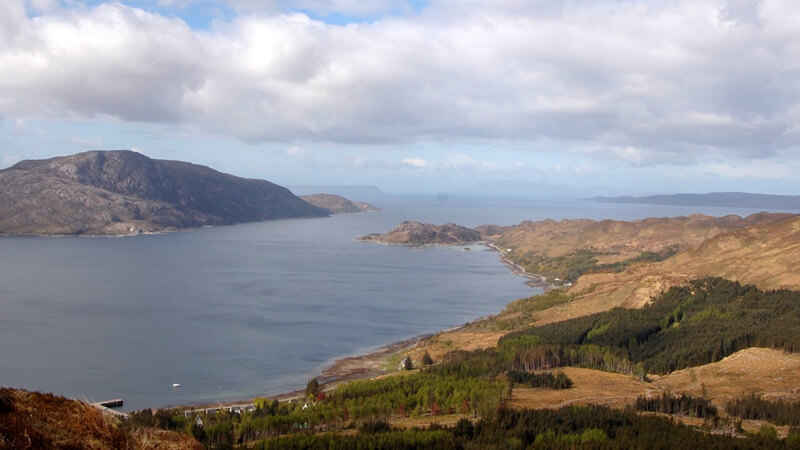
Loch Nevis looking towards the islands of Eigg and Rhum
All the peaks in Knoydart are accessible to a walker without the use of ropes.
You can see the Cuillin Ridge clearly from Knoydart while climbing the peaks there.
Both have excellent dining opportunities, especially if you like seafood.
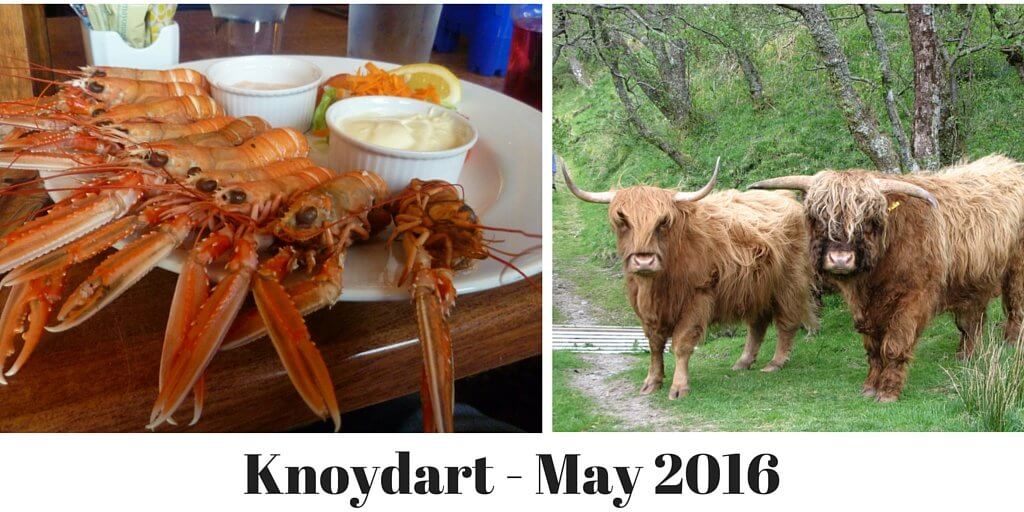
See our pictorial comparison below:
We’ve chosen 3 images from our Skye collection. They certainly give you an idea of the kind of terrain which makes up the ridge. If you’re on social media (and connected to the right people, which includes us!) you might have seen the famous film of Danny Macaskil riding his mountain bike along the ridge. In fact, you don’t even need to have been on social media as a short programme about the making of the film was shown on BBC TV.
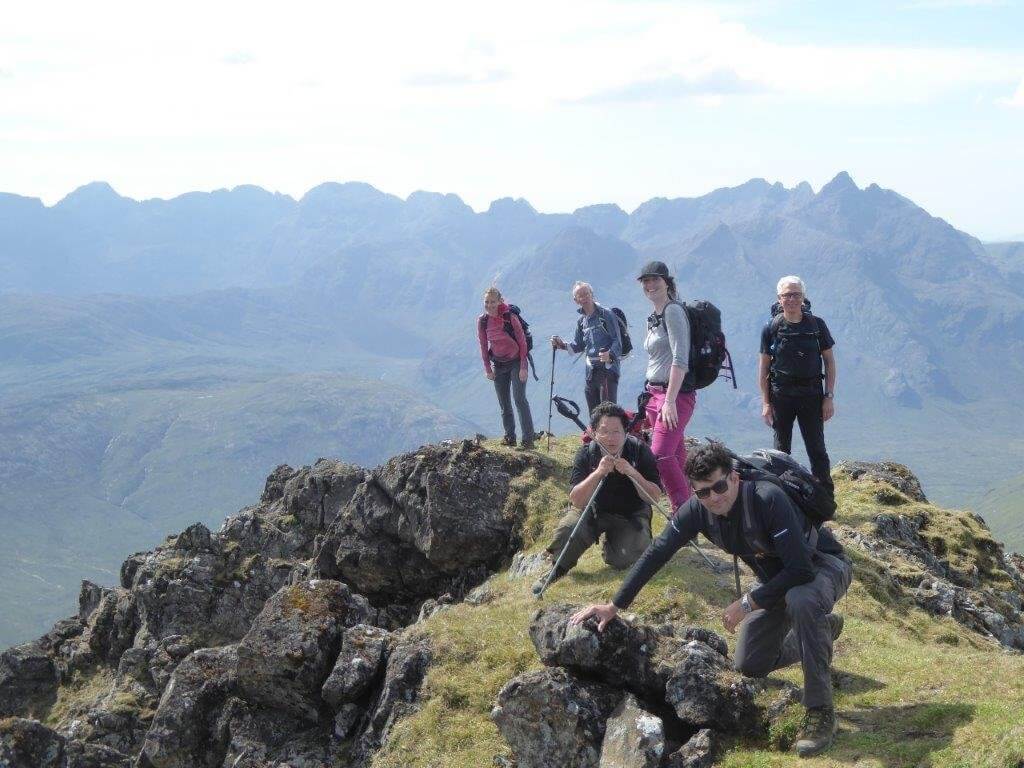
High in the Cuillin mountains of Skye
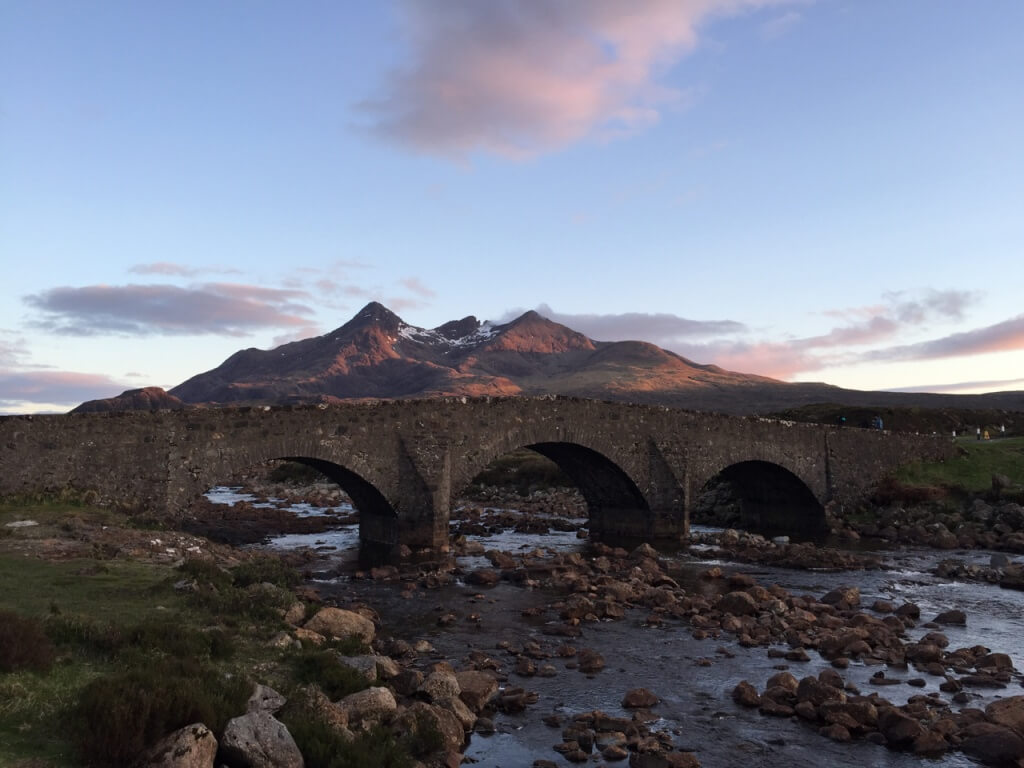
Sunset over Am Basteir from Sligachan on the Isle of Skye during the Skye Munros itinerary
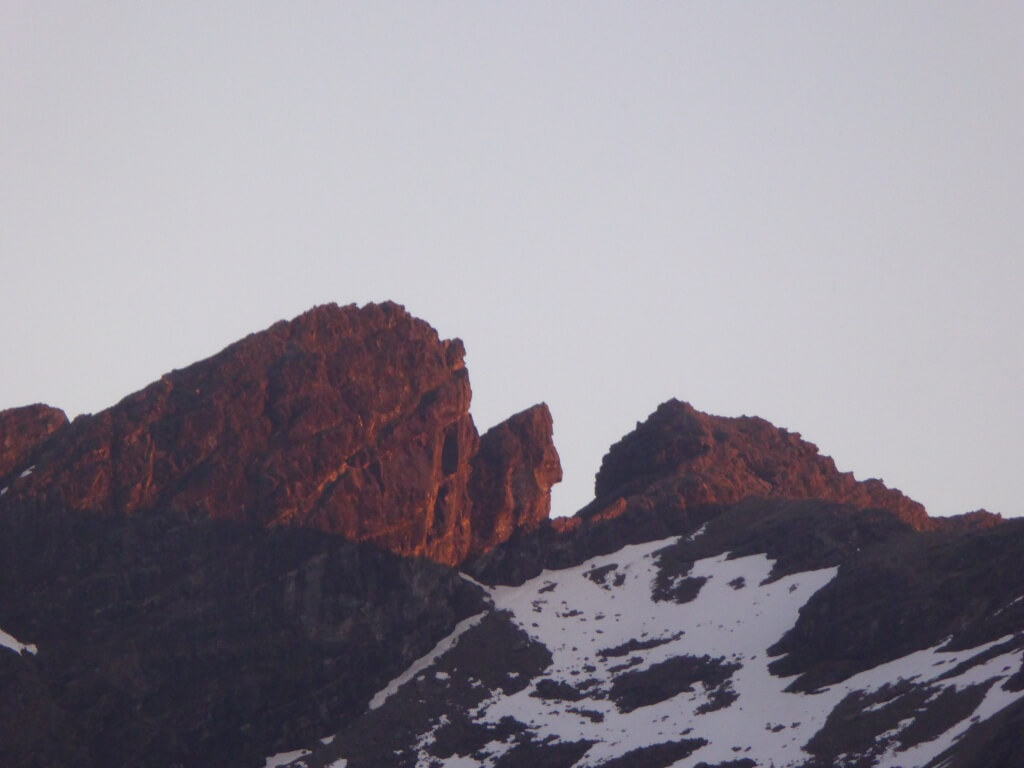
Sunset over the Cuillin hills in Skye
Britain’s most remote wilderness (on the mainland) – Knoydart does have a very special feel to it.
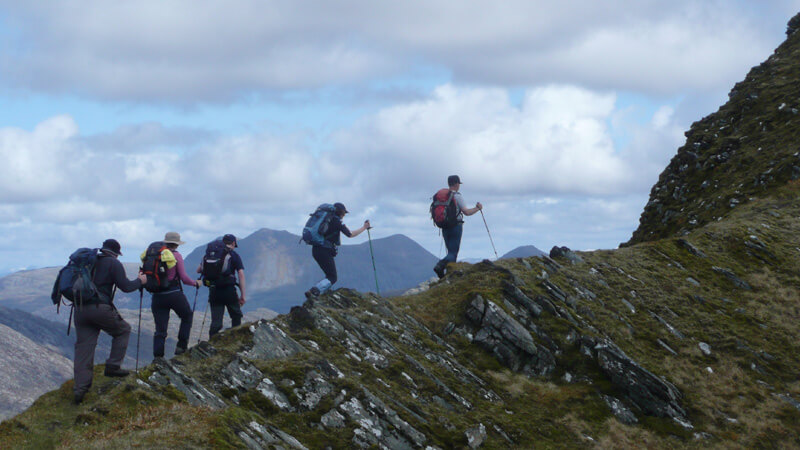
The ridges of the Knoydart peaks
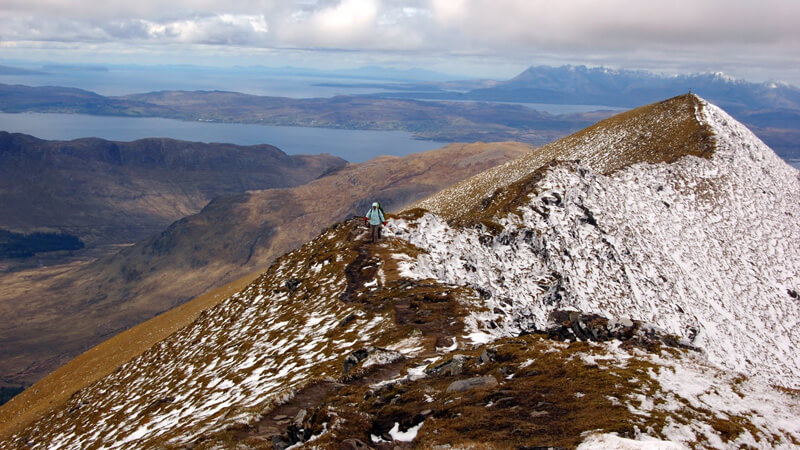
Eve negotiates the ridge
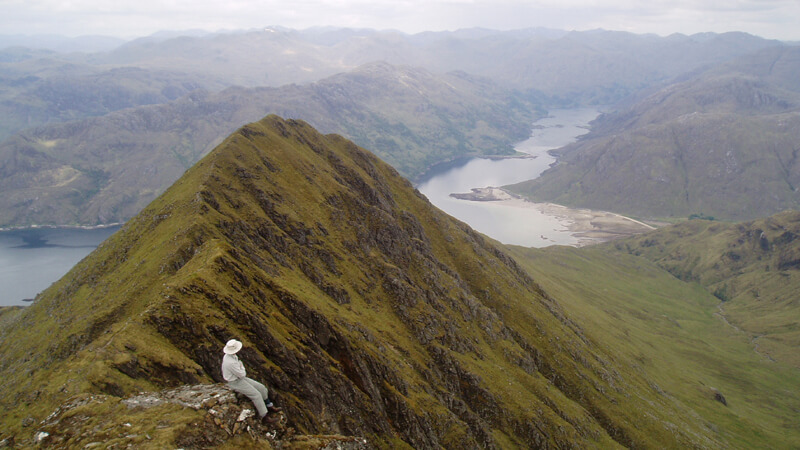
Mick admiring the view in Knoydart
Knoydart:
The Knoydart Foundation – http://www.knoydart-foundation.com/
The Old Forge, Britain’s most remote pub – http://www.theoldforge.co.uk/
Britain’s most remote wilderness in video – http://www.theguardian.com/travel/video/2013/jun/11/britain-wilderness-scotland-knoydart-peninsula-video
John Muir Trust in Knoydart – https://youtu.be/rGCL7uBRw5s
Skye:
Walkhighlands: The Black Cuillin
TripAdvisor: The Black Cuillin http://www.tripadvisor.co.uk/Attraction_Review-g186585-d196763-Reviews-Black_Cuillin-Isle_of_Skye_The_Hebrides_Scotland.html
Black Cuillin Ridge of Skye – http://www.mountainhiking.org.uk/scotland-mountains/skye/skye4.shtml
Danny Macaskill – The Ridge – https://youtu.be/xQ_IQS3VKjA
The Munro Show – Sgurr nan Gillean https://www.youtube.com/watch?v=Lfc-dDsfV6c
All content © Copyright Scot Mountain Holidays 2025
Responsive web design by Summit Web Solutions